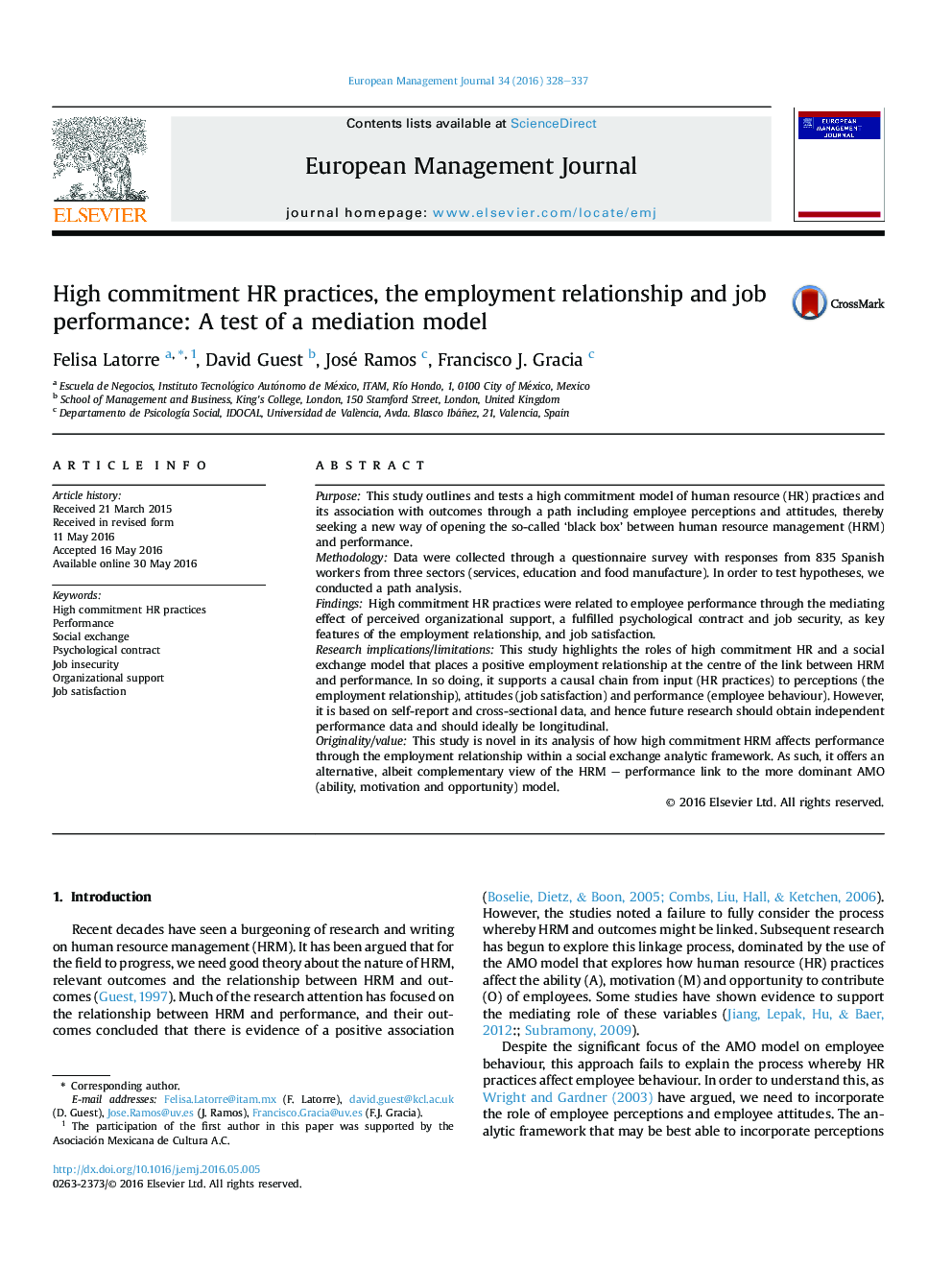| Article ID | Journal | Published Year | Pages | File Type |
|---|---|---|---|---|
| 1014713 | European Management Journal | 2016 | 10 Pages |
PurposeThis study outlines and tests a high commitment model of human resource (HR) practices and its association with outcomes through a path including employee perceptions and attitudes, thereby seeking a new way of opening the so-called ‘black box’ between human resource management (HRM) and performance.MethodologyData were collected through a questionnaire survey with responses from 835 Spanish workers from three sectors (services, education and food manufacture). In order to test hypotheses, we conducted a path analysis.FindingsHigh commitment HR practices were related to employee performance through the mediating effect of perceived organizational support, a fulfilled psychological contract and job security, as key features of the employment relationship, and job satisfaction.Research implications/limitationsThis study highlights the roles of high commitment HR and a social exchange model that places a positive employment relationship at the centre of the link between HRM and performance. In so doing, it supports a causal chain from input (HR practices) to perceptions (the employment relationship), attitudes (job satisfaction) and performance (employee behaviour). However, it is based on self-report and cross-sectional data, and hence future research should obtain independent performance data and should ideally be longitudinal.Originality/valueThis study is novel in its analysis of how high commitment HRM affects performance through the employment relationship within a social exchange analytic framework. As such, it offers an alternative, albeit complementary view of the HRM – performance link to the more dominant AMO (ability, motivation and opportunity) model.
